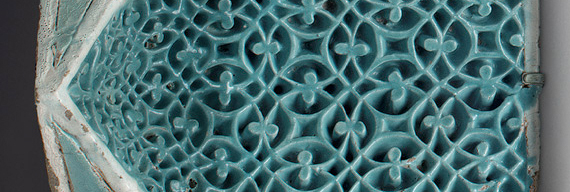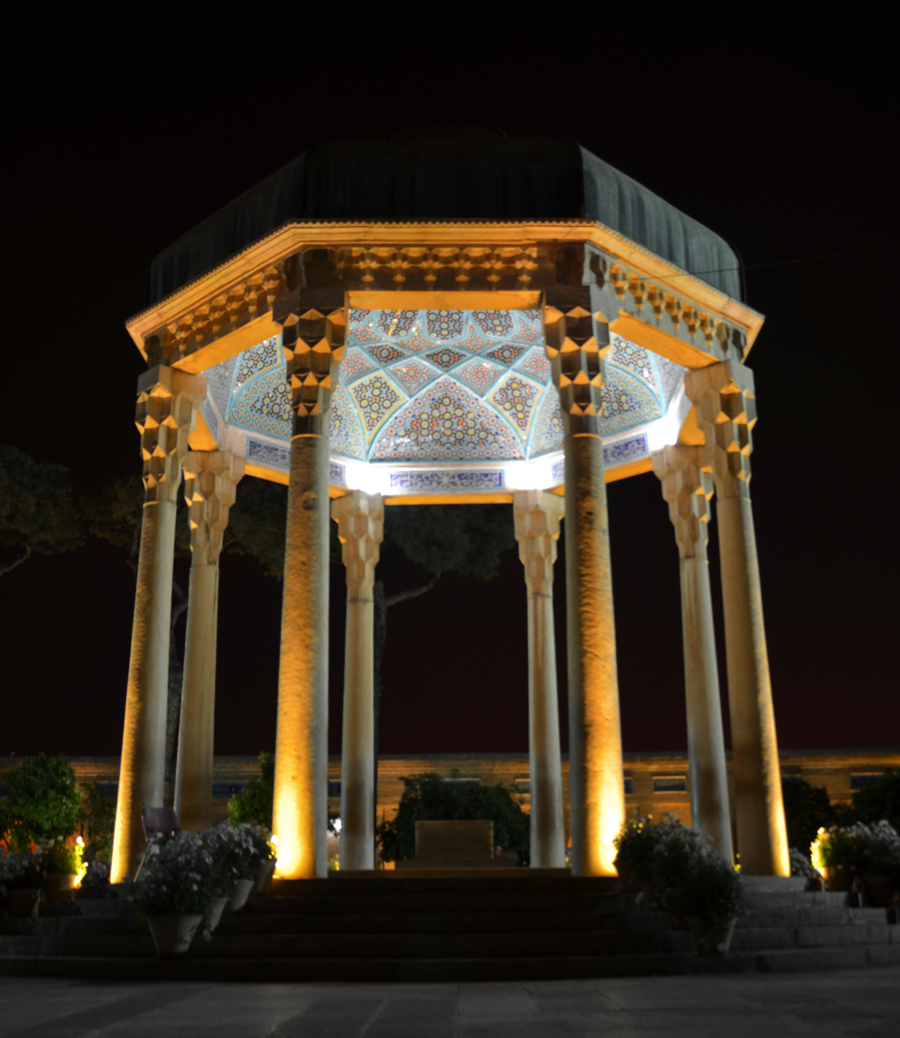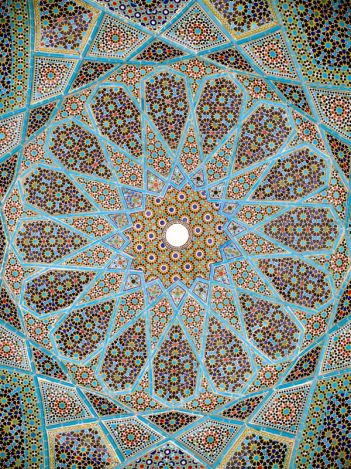Geometric patterns make up one of the three nonfigural types of decoration in Islamic art, which also include calligraphy and vegetal patterns. Geometric patterns are popularly associated with Islamic art, largely due to their aniconic quality.

Islamic Geometric design consists of interlaced circles, squares, four-sided polygons, and stars repeated in intricate combinations. The star itself is a pattern is from squares and triangles inscribed in a circle. These designs are so layered, that they seem to have a sense of the infinite, a complex take on the religious experience.
Tomb of Hafez in Shiraz, Iran, in memory of the celebrated Persian poet Hafez, pictured above and below.


Alterations in the 1930s to Hafez's tomb involved elevating it one metre above ground level and encircling it with five steps. Eight columns, each ten metres tall, support a copper dome in the shape of a dervish's hat. The underside of the dome is an arabesque and colourful mosaic.
